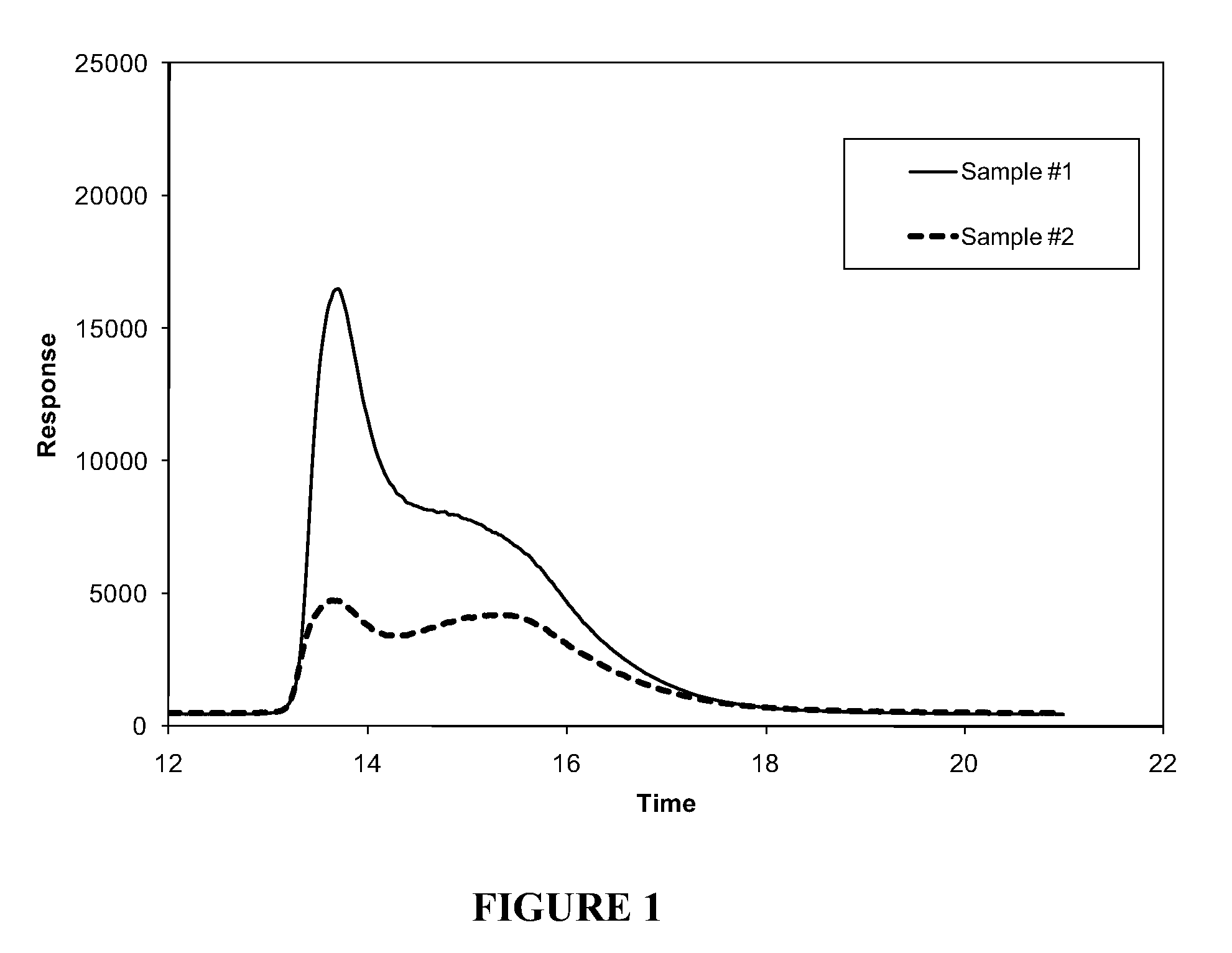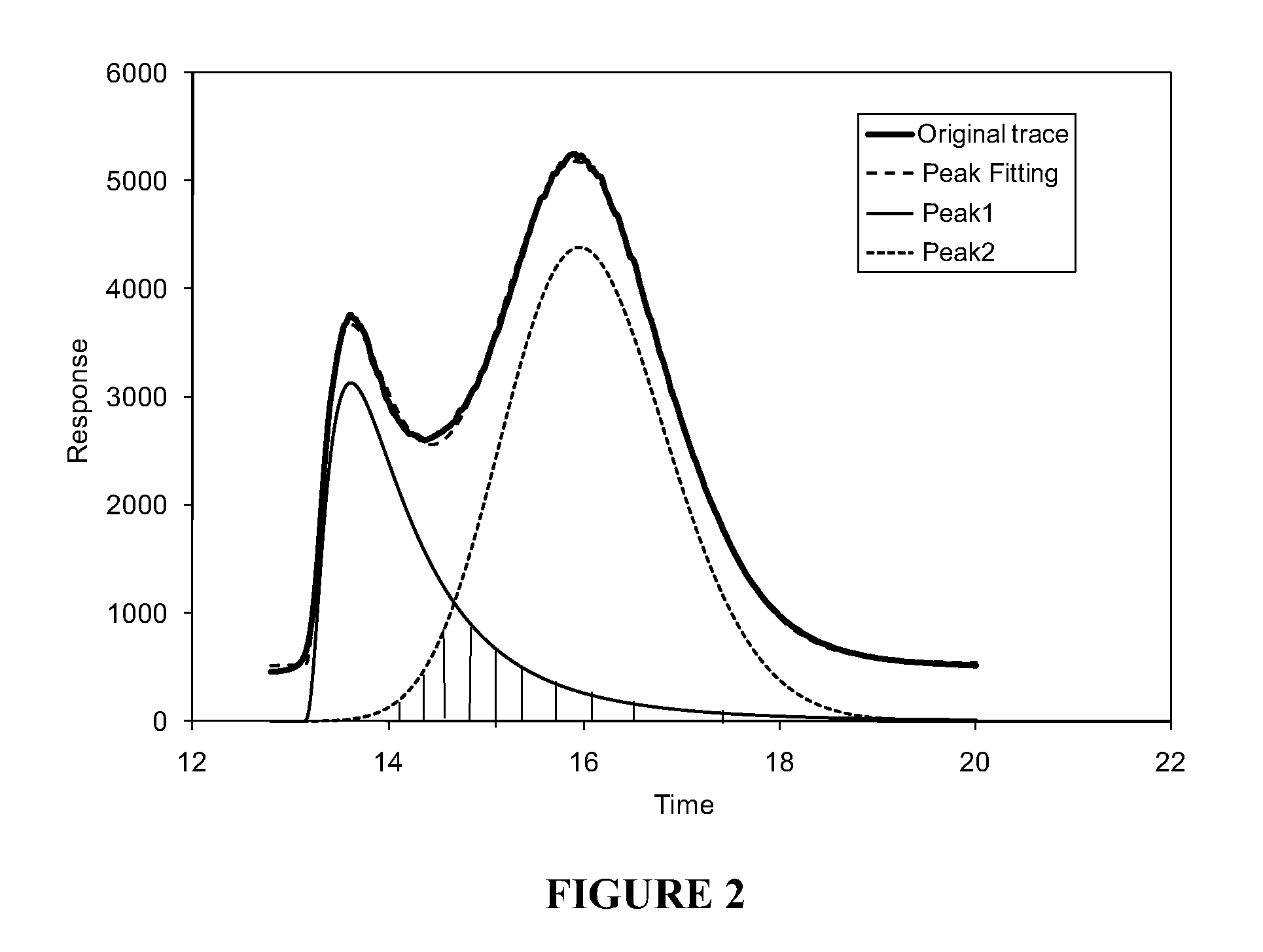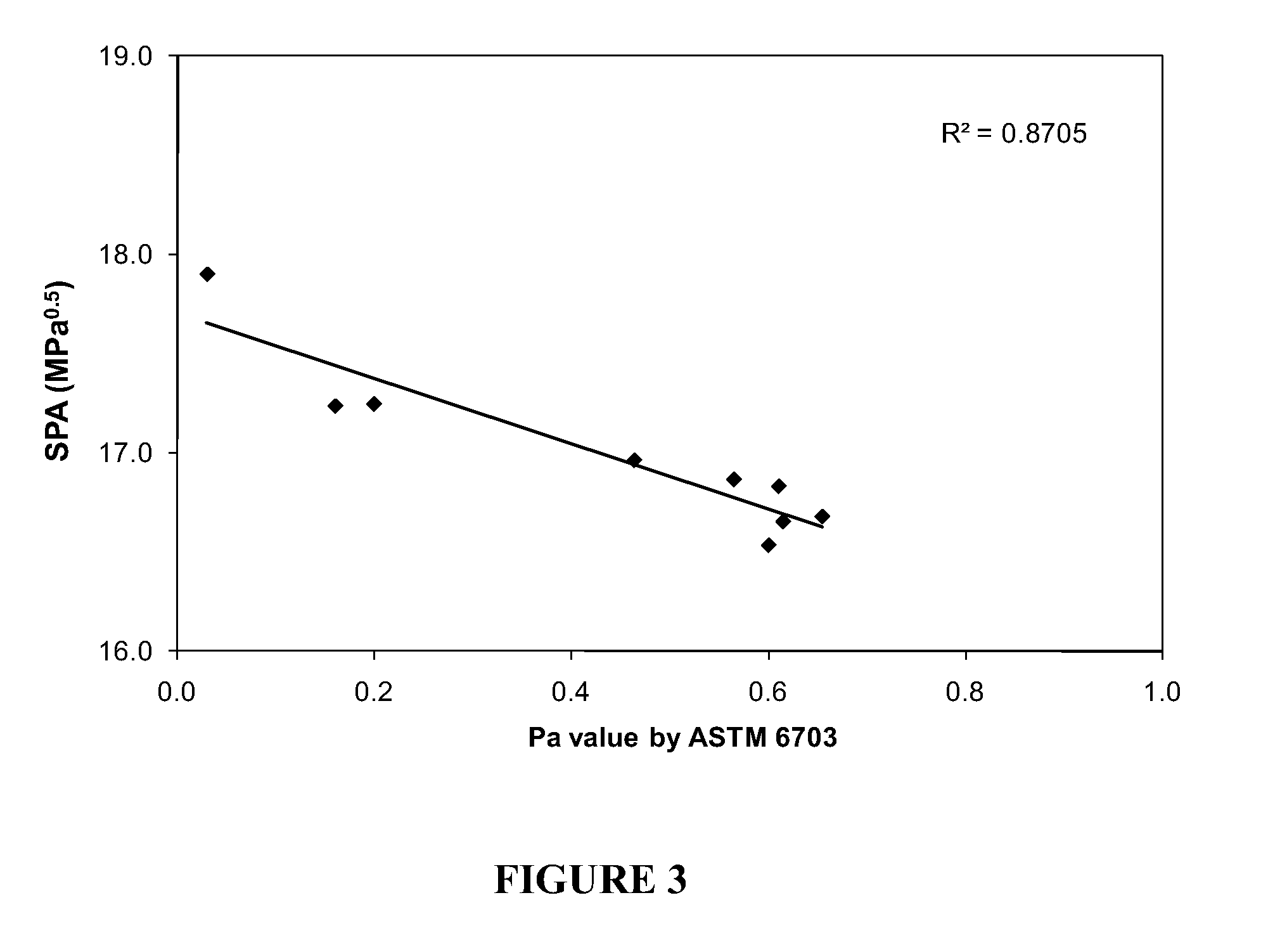Method for determining asphaltene stability of a hydrocarbon-containing material
a hydrocarbon-containing material and asphaltene technology, applied in the direction of tar working up by chemical refining, thermal non-catalytic cracking, instruments, etc., can solve the problems of asphaltene precipitation, limited efficiency of converting such hydrocarbon materials, and increase the tendency of asphaltenes to agglomerate into larger particles, etc., to achieve effective determination of stability for asphaltene concentrations lower, cost efficient and repeatable
- Summary
- Abstract
- Description
- Claims
- Application Information
AI Technical Summary
Benefits of technology
Problems solved by technology
Method used
Image
Examples
example 1
[0099]Typical solubility profile distributions for different materials.
[0100]Solutions of two heavy crude oils from Venezuela (Sample #1) and Mexico (Sample #2), respectively, were prepared by dissolving 0.1000 g of the heavy crude oil in 10 mL of methylene chloride. Both solutions were injected into a separate stainless steel column packed with poly(tetrafluoroethylene) (PTFE) using a heptane mobile phase at a flow rate of 4 mL / min. The maltenes (heptane solubles) eluted from the column as the first peak around 2 minutes after the injection. After 10 minutes, a final mobile phase of 90 / 10 methylene chloride / methanol blend was passed into the column at a flow rate of 4 mL / min. The change of the solvent from heptane to the methylene chloride / methanol blend redissolved a portion of the asphaltenes which started to elute around 12 minutes. After 20 minutes, a final mobile phase of 100% methanol was passed into the column at a flow rate of 4 mL / min.
[0101]The concentration of maltenes an...
example 2
[0103]Peak fitting of the solubility profile.
[0104]A solution of a petroleum product (0.1000 g) was prepared in 10 mL of methylene chloride. The solution was injected into a stainless steel column using the same equipment, solvents and procedure as described in Example 1.
[0105]The asphaltene solubility profile of the sample was recorded using the same equipment and in substantially the same manner as in Example 1.
[0106]The asphaltene solubility profile shown in FIG. 2 and labeled as original trace was processed mathematically so that it was separated into two distinct peaks (i.e., Peak 1 and Peak 2). A personal computer running commercially available software package (GRAMS / AI by Thermo Galactic) was used for carrying out the mathematical procedure. FIG. 2 also shows the curve corresponding to the peak fitting of the original trace curve as well as the curves corresponding to the separated peaks, i.e., Peak 1 and Peak 2. As discussed in Example 1, Peak 1 is referred to as “easy to d...
example 3
[0108]SPA as a function of the peptizability value determined by ASTM 6703.
[0109]Several solutions of asphaltenes extracted from different hydrocarbon containing materials including virgin (Crude oils and vacuum residues) and processed materials were prepared by dissolving 0.0100 g of asphaltenes in 10 mL of methylene chloride. The solutions were injected into a separate stainless steel column using the same equipment, solvents and procedure as described in Example 1.
[0110]The asphaltene solubility profile of the sample was recorded using the same equipment and in substantially the same manner as in Example 1. The resulting asphaltene solubility profiles were then mathematically processed according to Example 2 using a personal computer running commercially available software package (GRAMS / AI by Thermo Galactic) to obtain the separated peaks. The SPA or average solubility parameter of the hard to dissolve asphaltenes (Peak 2) was determined as the mean of the distribution of respon...
PUM
 Login to View More
Login to View More Abstract
Description
Claims
Application Information
 Login to View More
Login to View More - R&D
- Intellectual Property
- Life Sciences
- Materials
- Tech Scout
- Unparalleled Data Quality
- Higher Quality Content
- 60% Fewer Hallucinations
Browse by: Latest US Patents, China's latest patents, Technical Efficacy Thesaurus, Application Domain, Technology Topic, Popular Technical Reports.
© 2025 PatSnap. All rights reserved.Legal|Privacy policy|Modern Slavery Act Transparency Statement|Sitemap|About US| Contact US: help@patsnap.com



